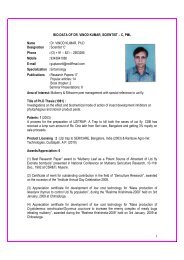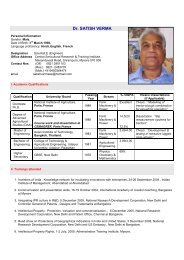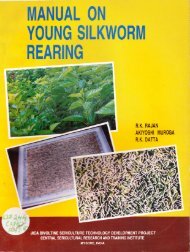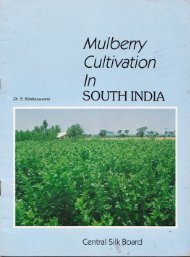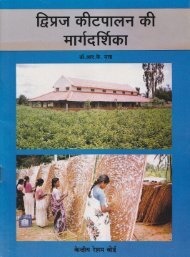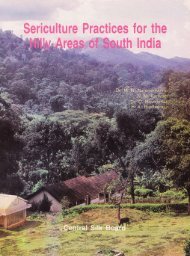BIVOLTINE RACE AND
Manual on Bivoltine Rearing, Race Maintenance and Multiplication
Manual on Bivoltine Rearing, Race Maintenance and Multiplication
- No tags were found...
You also want an ePaper? Increase the reach of your titles
YUMPU automatically turns print PDFs into web optimized ePapers that Google loves.
INTRODUCTION<br />
The bivoltine silkworms produce cocoons with high raw silk recovery and bivoltine silk<br />
excels in quality and International standards. Originating from temperate countries these<br />
breeds have been evolved in luxuriant climate and nutrition. If these are to be raised under<br />
variable tropical conditions, one has to provide optimum conditions to realise the full<br />
competence of the breeds/hybrids. Only a small section of farmers has realised the benefits<br />
of bivoltines. Keeping in view of the optimunn rearing temperature requirements for<br />
bivoltines under tropical condition, the cooler months of the year i.e., August-February are<br />
ideally suited in general for bivoltine rearings in South India when temperature is moderate with<br />
less fluctuations. The success of bivoltine crops depends primarily on the following technologies.<br />
1.0. CRITERIA FOR SELECTION OF NARMERS<br />
-<br />
-<br />
-<br />
-<br />
-<br />
-<br />
-<br />
-<br />
-<br />
On the basis of previous records, farmers who have harvested successful cocoon crops<br />
(bivoltine) only be selected.<br />
Farmers with a separate rearing house are preferred. If there is no'separate rearing<br />
house, a separate roorn provided with windows and ventilation may be considered.<br />
Those who conduct systematic disinfection before and after each crop.<br />
Farmers having own mulberry garden with irrigation facility for raising quality leaf for<br />
young and late age worms<br />
Those capable of applying adequate quantity of manure (FYM) and fertilizer.<br />
Having adequate rearing equipment.<br />
Having knowledge on the use of disinfectants and maintaining hygiene in the rearing<br />
house during rearing.<br />
Having wire mesUnylon net enclosure to check uzi menace.<br />
Possession of a rearing house of at least 3.6m to 4.5m height preferably with false roofing.<br />
2.0. DISINFECTION<br />
To prevent and/or control silkworrn diseases, more attention should be paid to the<br />
disinfection. The most commonly used disinfectants are formalin and bleaching powder.<br />
-<br />
-<br />
-<br />
-<br />
Conduct disinfection preferably at room temperature (24-25"C).Th* efficacy decreases<br />
with temperature less than 20"C.<br />
Soon after the completion of each rearing, wash thoroughly the rearing equipment,<br />
rearing house, incubation room,. leaf preservation room and mounting hall with l%<br />
bleaching powder in 0.3Vo slaked lime * 0.27o detergent solution or 3Vo formalin<br />
(Watanabe, 1995).<br />
Sun dry the appliances thoroughly (15-20 hours).<br />
Disinfect the rearing trays by dipping them into ZVo bleaching powder in 0.37o<br />
slaked lime +0.27o detergent solution or 0.37o slaked lime +0.2Vo detergent




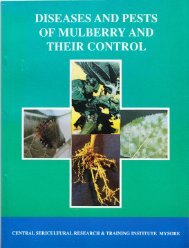

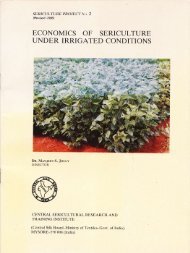
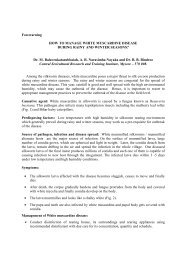
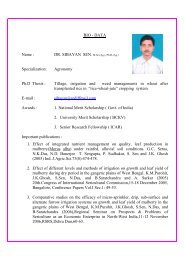
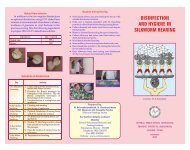
![E}A]\GALORE](https://img.yumpu.com/54052619/1/190x260/eagalore.jpg?quality=85)

